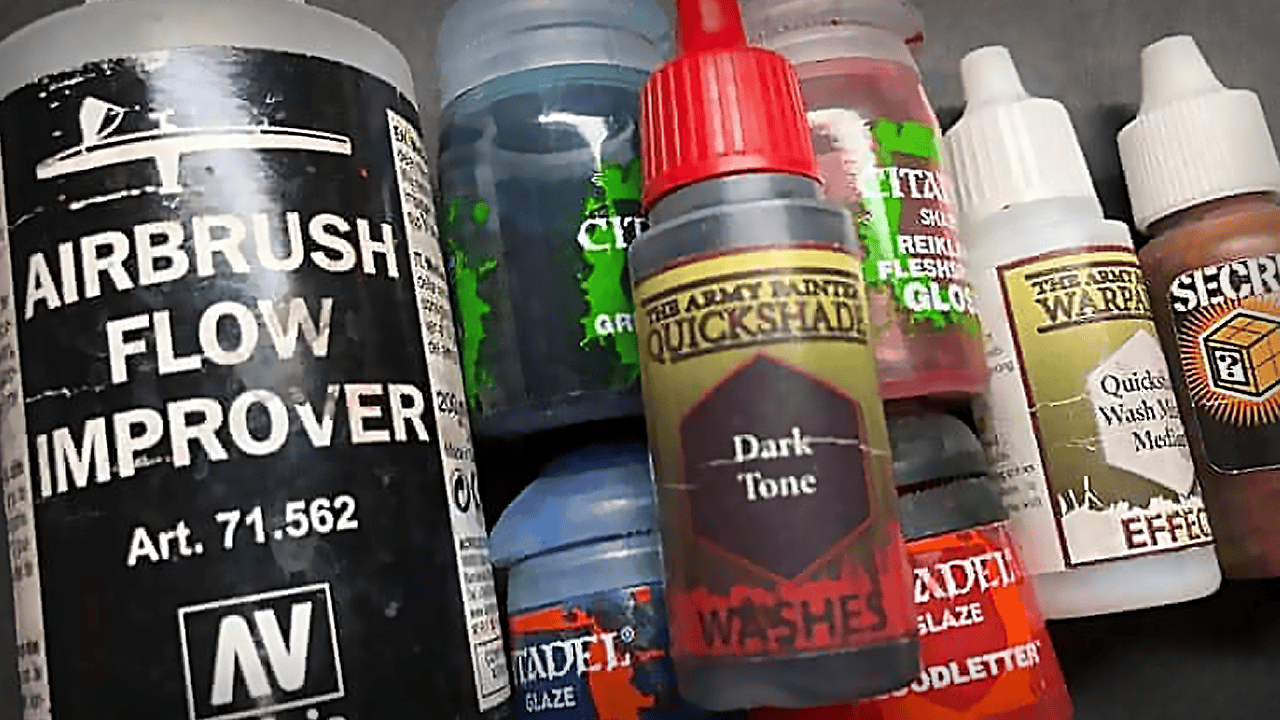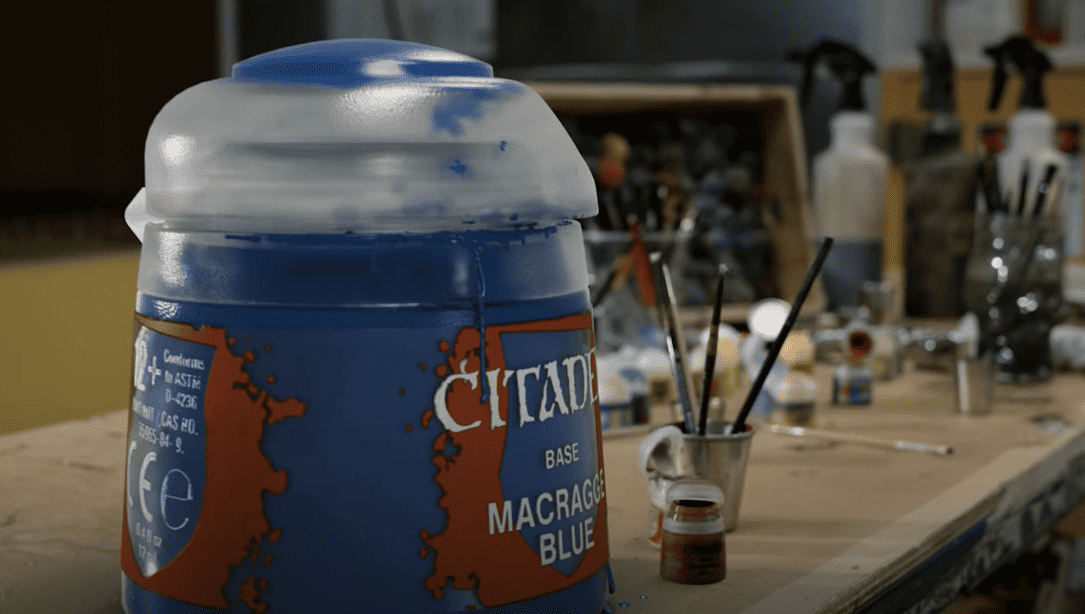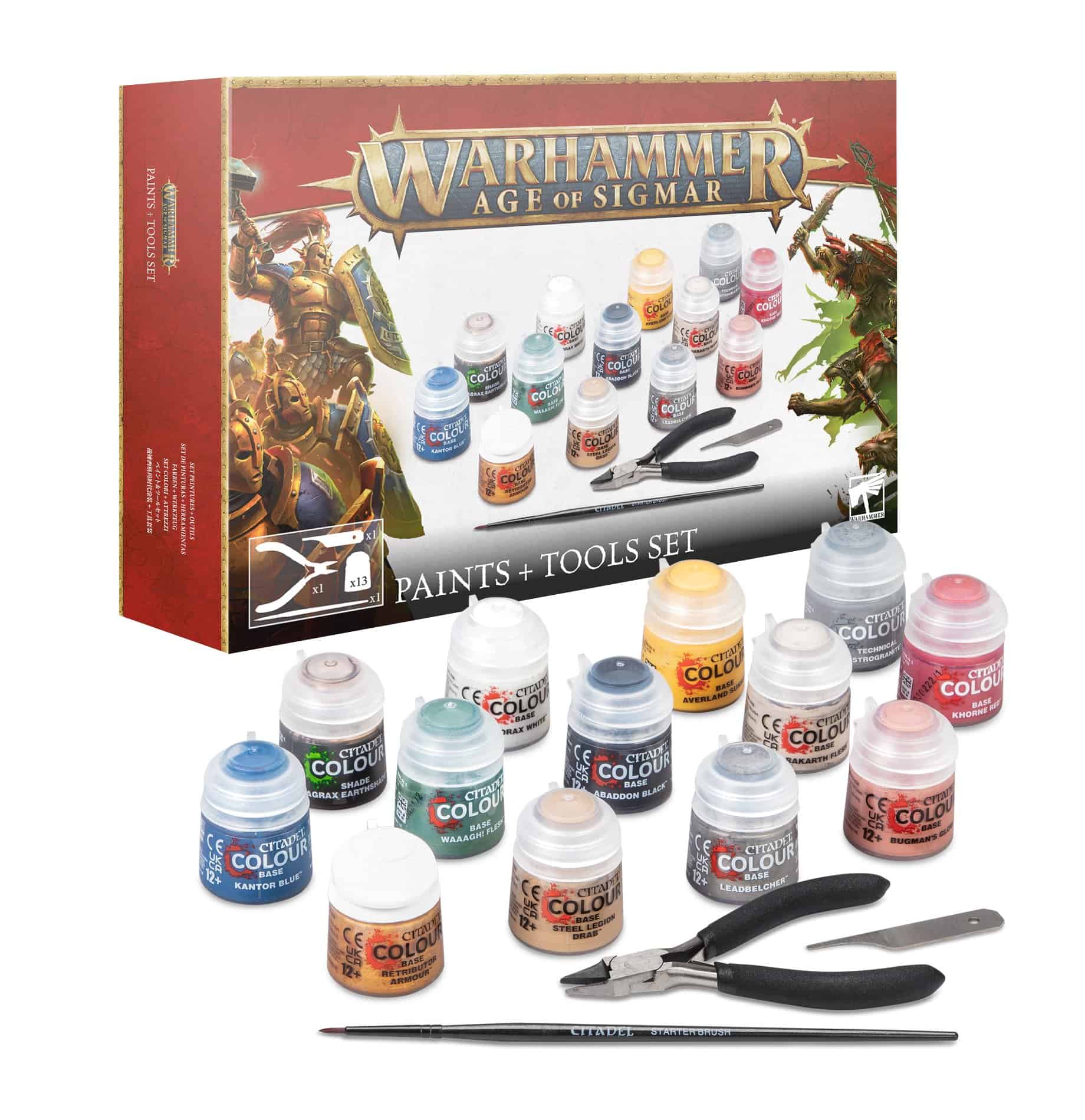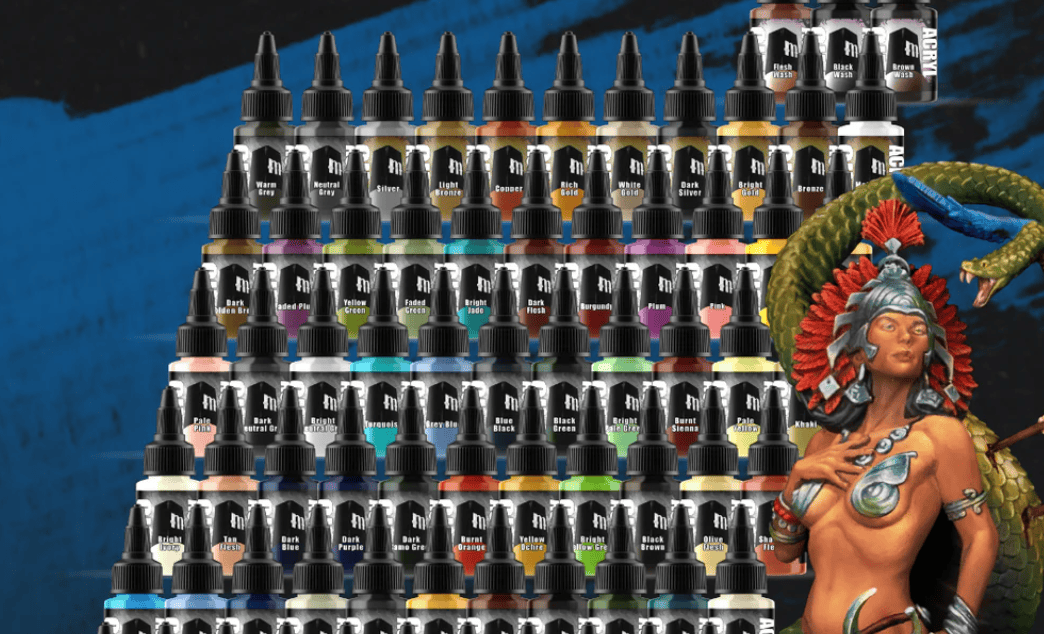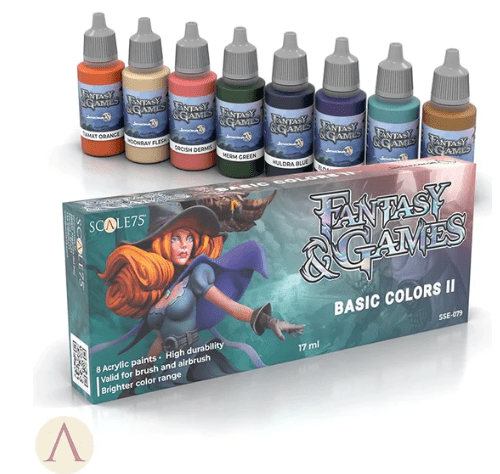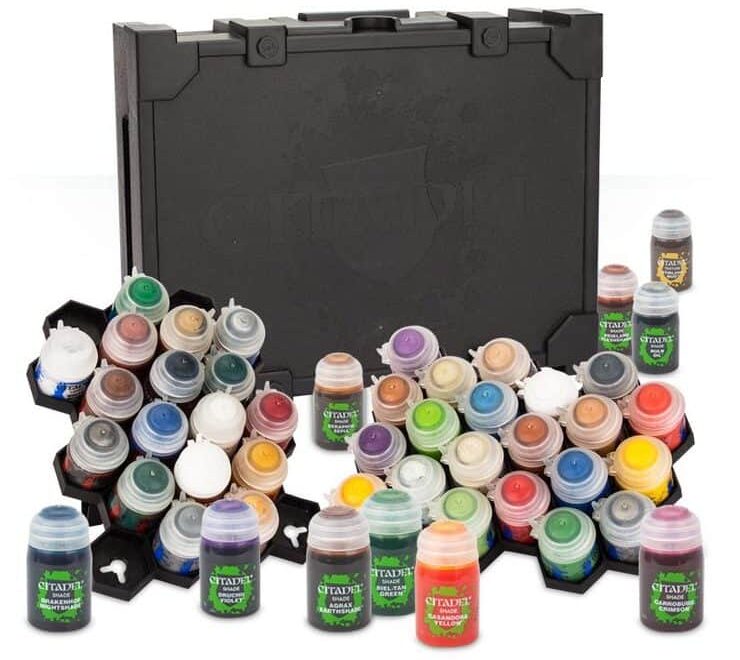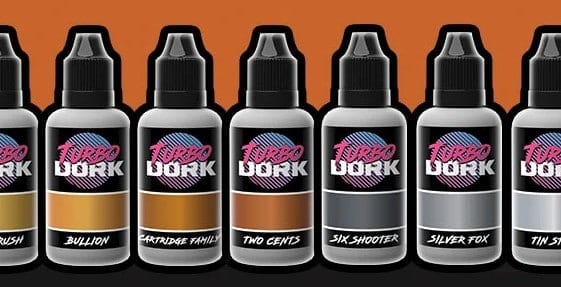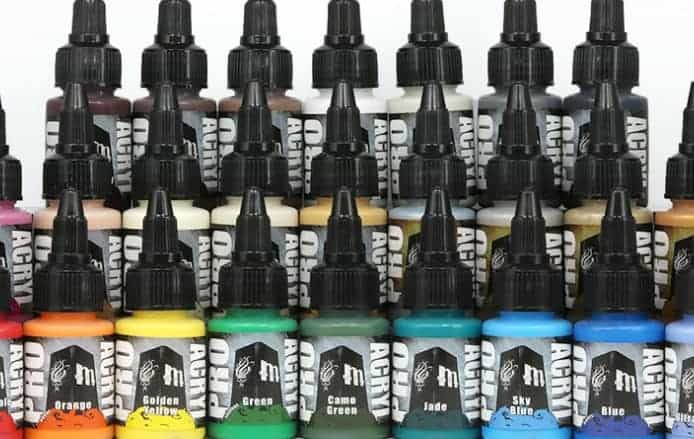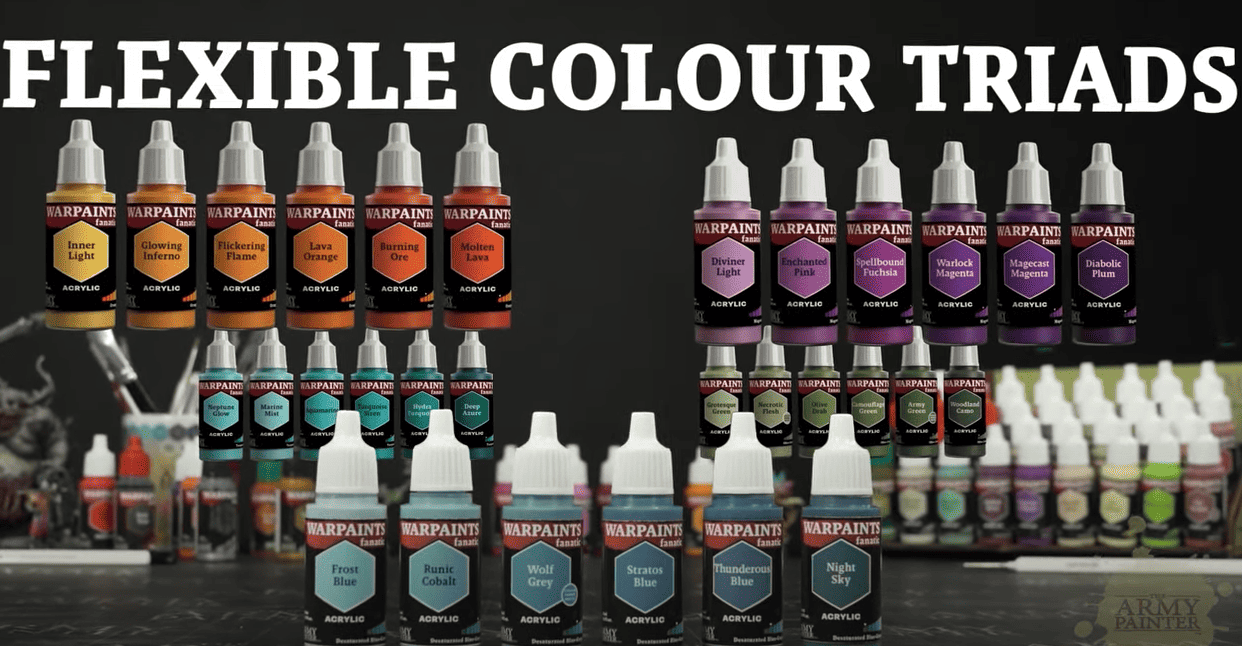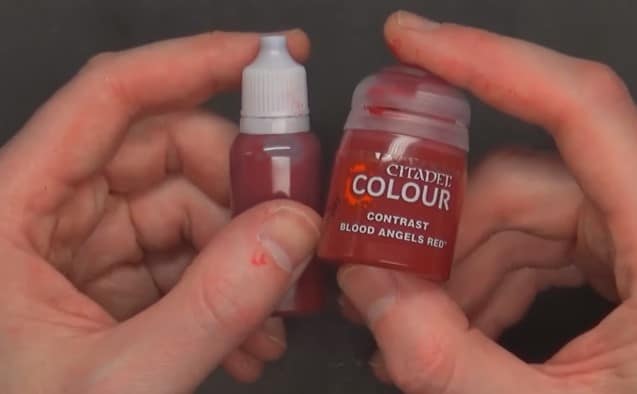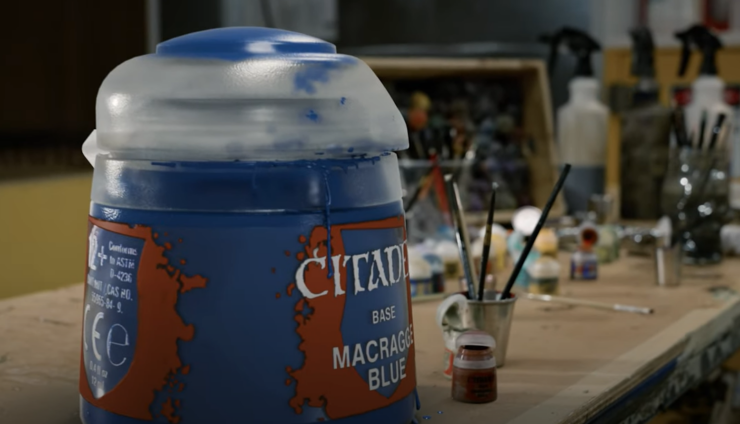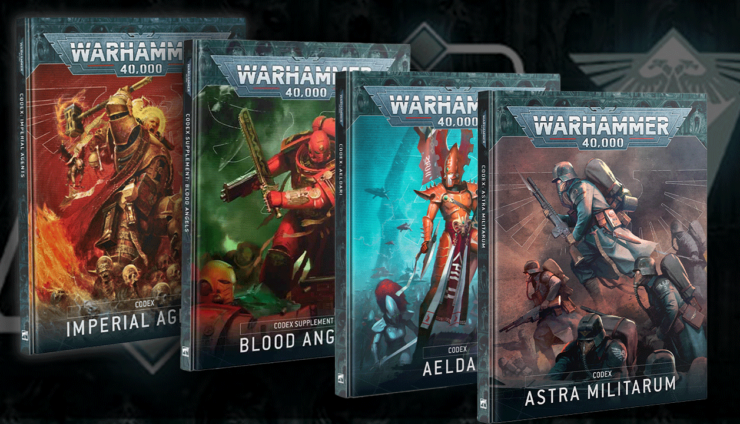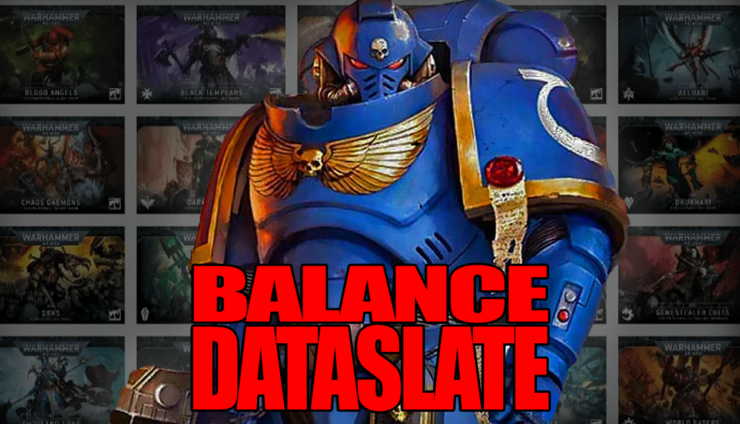Find the best acrylic paints for miniatures and Warhammer, and compare top brands like Citadel, Vallejo, Army Painter, and more for perfect model painting results.
Welcome to the grand battlefield of miniature painting! Whether you’re preparing to bring a horde of orks to life or perfecting the glow on a single Elven mage, the paint you choose can be the difference between tabletop triumph and a model that looks like it rolled through a swamp.
From vibrant hues to grimdark shadows, finding the right acrylic paint for your army (or that one really cool figure) is as important as rolling that critical hit.
Best Acrylic Model Paints for Warhammer & Miniatures: Top Paint Brands for Every Project
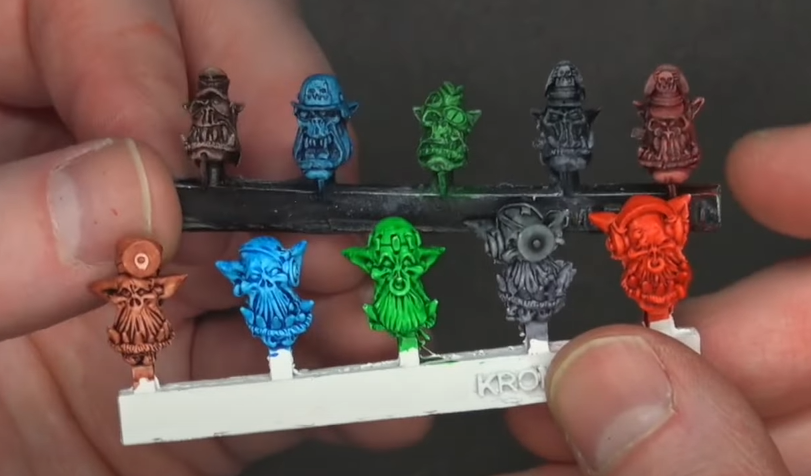
- Acrylic Model Paints: What to Consider Before Buying
- Recommended Acrylic Paint Brands for Miniatures and Warhammer
- Price Comparison of Model Paints for Miniatures
- Best Paint for Miniatures Based on Use Cases
- How to Transfer Citadel Paints to Dropper Bottles
- Acrylic Paint Accessories for Miniatures
- Best Washes and One-Coat Paints for Miniatures
Acrylic Model Paints: What to Consider Before Buying
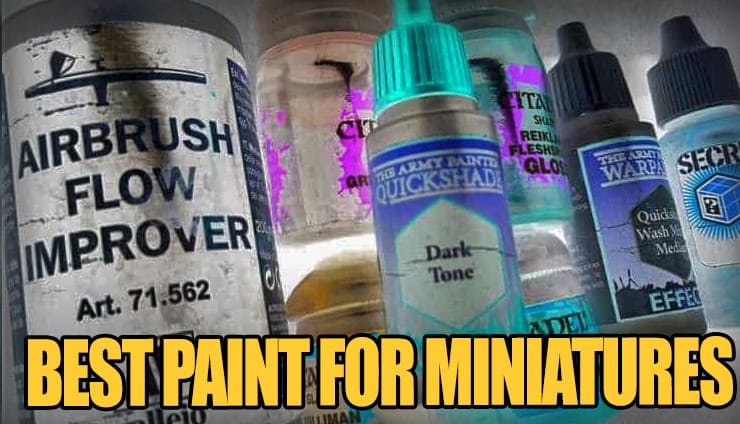
Acrylic paints are the go-to potion of choice for many hobbyists, but choosing the right one can be as tricky as facing off against a rampaging Chaos Spawn. Let’s talk about the key elements to help you pick the best acrylic paints for miniatures.
What Are the Best Acrylic Paints for Miniatures & Wargames Models?
Based on their individual pros and cons, these are the best brands for painting tabletop miniatures and wargame models, depending on your preferences.
- Citadel Paint (Games Workshop’s Brand): These paints are widely available at most local games stores and GW stores worldwide. Constant consistency across all batches. The only bad thing is that the paint pot uses a pour method, which can cause messes and paints to dry faster. Plus, the price is basically the highest per ML.
- Vallejo: Widely available at game stores outside of the United States. High consistency across all batches and a wide variety of styles of paints. Their line of air paints is loved by many as it was the first widely available to hobbyists. However, in recent years (even pre-COVID), restocks of Vallejo paints in the states have been problematic, to say the least.
- Pro Acryl: Available now in some of the best gaming stores worldwide, with one of the best bottle designs out there. Plus, the quality of the paint is insanely high.
- Turbodork: Also now available in most gaming stores worldwide, along with quick shipping in America. Their Turboshift colors are some of the most interesting out there.
- Scale 75: It’s available mostly online only, and shipping is quick in America. Their finish is a Matte, and it is one of the most realistic options around
- Army Painter: It is available at increasing numbers of game stores worldwide. Constant consistency across all batches and a color-match primer/ paint bottle system save hours of time hobbying. Plus, they even have an airbrushing and a speedpaint (Contrast) line.
- P3 Paint (Privateer Press): There is high consistency across all batches, which is rumored to have been developed by hobby guru Mike McVey of McVey Studios. Previously found in most gaming stores, recent changes to how Privateer Press deals with retailers have caused many not to carry any Privateer products at all, sadly.
- Reaper Paints are on the lower end for price, and we regularly use the orange-brown and harvest brown for weathering and basing for yellows.
So, it looks like Army Painter has the lowest paint price per ML out of the other brands. Meanwhile, GW is topping the charts in terms of price.
At the end of the day, it just comes down to what you look for in the best paints for miniatures & wargames models!
What Makes a Good Acrylic Model Paint For Warhammer?
 Consistency and Smoothness
Consistency and Smoothness
Imagine you’re painting your prized Warhammer model, and you need to pick the right miniature paint. You don’t want the paint to be thick like a bog of eternal stench or watery like a halfhearted goblin brew.
What you’re aiming for is that Goldilocks zone—smooth and consistent. A good acrylic paint should glide onto your miniatures with grace, without clogging the details of your model or sliding off like a drunken dwarf.
A silky consistency means your brushstrokes stay fine, your layers stay thin, and your end result looks polished, not clunky. Oh, and just for fun, we did the math on what a gallon of Games Workshop paint would cost, which was quite eye-opening.
The smoother the paint, the better control you’ll have. No one wants to drown their mini in paint, turning a lovingly crafted figure into a blob of color.
Whether you’re highlighting the scales of a fearsome dragon or accentuating the folds of a wizard’s robes, a smooth, even flow will give you precision with every stroke.
Coverage and Pigmentation
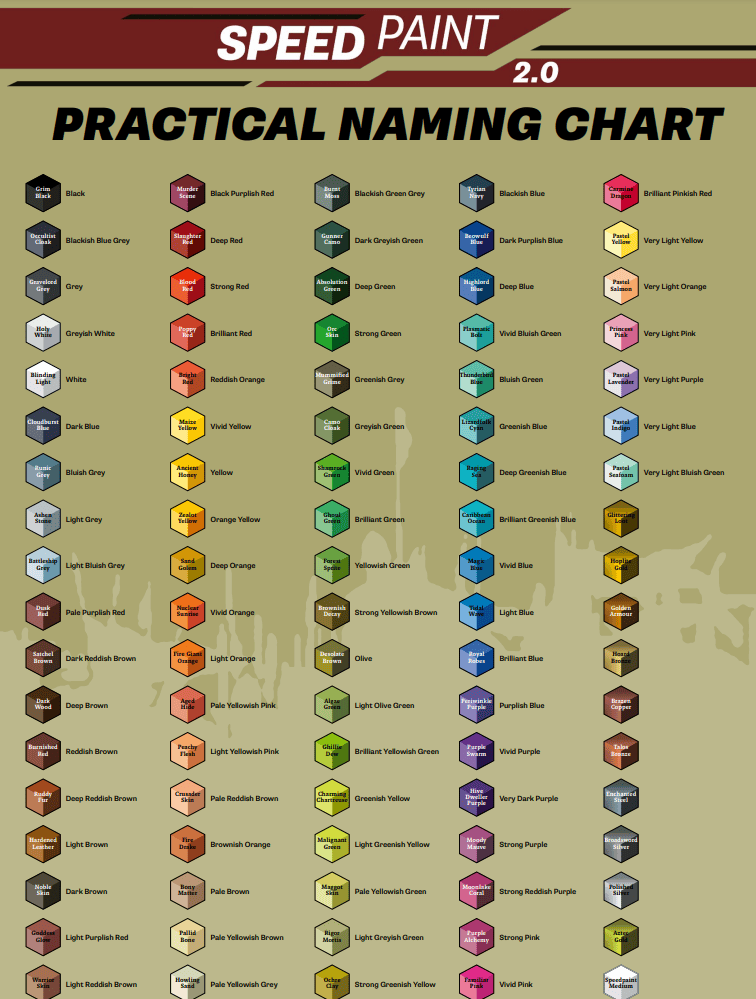
Fewer coats mean less time spent fighting your paint and more time bringing your masterpiece to life. Ideally, a good acrylic should cover the surface like a well-cast illusion spell—complete and convincing, without any pesky undercoat showing through.
If you find yourself applying endless layers to get your reds vibrant or your whites pristine, it’s time to upgrade your paint. Look for high pigmentation—this ensures you’re not wasting time (or sanity) on endless coats. After all, that horde of orcs isn’t going to paint itself.
Finish Type: Matte vs. Satin
The final touch on your miniatures can make or break the overall vibe. Do you want your freshly painted army to look battle-worn and rugged, or are you after a shiny finish fit for the gilded halls of the Emperor? Matte finishes are the choice of many painters for that realistic, gritty look.
Whether it’s a squad of Imperial Guard or a grizzled group of adventurers, matte gives you a more grounded, subdued aesthetic. The colors don’t scream at you; they whisper tales of war and hardship.
On the other hand, satin finishes can offer a bit more flair. They give a slight sheen, making armor, robes, and even organic textures pop a little more.
If you’re painting something that needs to catch the light, satin might just be your ally. But beware—too much shine, and your miniatures might start to look like they’ve been covered in a mysterious ooze!
Acrylic Paints vs. Enamel and Oil Paints for Miniatures
 Acrylic Model Paints
Acrylic Model Paints
Why do so many miniature painters swear by acrylic model paints? They’re easy to work with, forgiving of mistakes, and dry quicker than a goblin stealing treasure. Their water-based nature means they clean up easily—just a splash of water, and your brushes are ready for another round.
Plus, they’re non-toxic, which means you won’t need a hazmat suit to paint your Dreadnoughts. For the everyday miniature painter, acrylics are the weapon of choice: flexible, versatile, and ready to adapt to just about any painting style.
Enamel and Oil Paints
Now, if you want to get into the dark arts, we can talk enamel and oil paints. These bad boys are slower drying and require a bit more alchemy—like solvents and thinners—to work with. But they do have their place, particularly when it comes to weathering effects.
Want your tank to look like it’s been through the thick of it? Oil washes and enamel paints can give you that lived-in, war-torn appearance with their smooth blends and intense details.
However, for most modelers, acrylics win the day. They’re quicker, simpler, and more versatile for the average project. Oil and enamel might have their uses, but unless you’re going for hyper-realistic battle damage or rusted mechs, acrylics will serve you well in the wilds of miniature painting.
Recommended Acrylic Paint Brands for Miniatures & Warhammer
When it comes to painting miniatures, there’s nothing quite like the satisfaction of putting the final touches on your latest creation. Whether you’re commanding a Warhammer army or crafting a display piece, choosing the right acrylic paints is critical.
From rich, battle-hardened tones to vibrant, magical hues, the paint you use can make or break your masterpiece. Let’s take a look at some of the best paint brands for miniatures and Warhammer.
Citadel Paints (Games Workshop) – A Warhammer Favorite

Whether you’re painting a Space Marine or a Tyranid, Citadel paints offer high-quality pigmentation with an impressive range of colors. If you’re looking for consistency, Citadel’s got your back—no surprises when it comes to tone or texture across batches.
But with great power comes a cost. Citadel paints are known for being on the pricier side, and they come in those infamous flip-top pots. Not exactly the most convenient option for long-term storage or precision pouring. Still, Citadel paints are widely available, whether you’re shopping at your local game store or online.
Pros & Cons
- Pros:
- Wide range of colors, from grimdark to gleaming.
- Ideal for beginners, with plenty of tutorials and support.
- High quality with consistent pigmentation.
- Cons:
- A bit expensive for the amount you get.
- The paint comes in pots rather than dropper bottles, which can lead to spills and drying out faster.
The Army Painter – Affordable Paint for Modelers
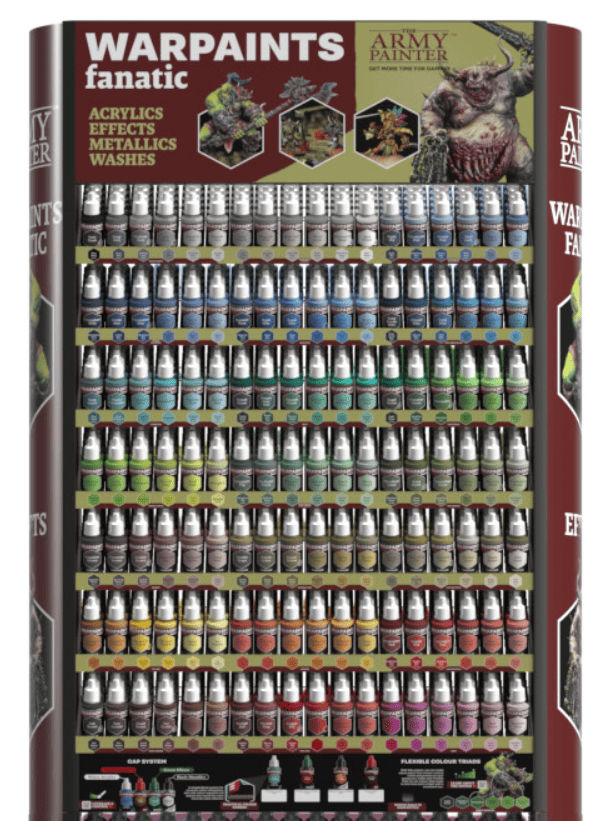
If you’re working on an entire Warhammer army and need to get those minis painted before your next tabletop session, The Army Painter’s paints are an efficient choice.
One standout feature is that they offer excellent value in terms of price per milliliter. Plus, they come in dropper bottles, which means less mess and longer-lasting paint.
However, the consistency is a bit thicker than some other brands, which means you’ll need to thin it down with water or medium before applying it smoothly.
Pros & Cons
- Pros:
- Best price per milliliter, perfect for large-scale projects.
- Dropper bottles make them easy to use and store.
- Fast and effective for speed-painting armies.
- Cons:
- Thicker consistency requires some practice to thin down properly.
Pro Acryl – Top Quality for Miniature Painters
For those looking to level up their painting game, Pro Acryl is a top contender. If you’re serious about getting the smoothest blends and sharpest highlights, this paint should be on your radar.
Known for its high opacity and smooth flow, Pro Acryl paints glide onto miniatures like butter, giving you unparalleled control.
Though the color range isn’t as extensive as some other brands, what they do offer is packed with quality. Their metallics are also standout performers, offering rich, shiny finishes perfect for those heroes clad in armor.
Pros & Cons
- Pros:
- High coverage, meaning fewer layers are needed.
- Great for blending and achieving smooth transitions.
- The bottle design is a painter’s dream.
- Cons:
- Limited color range compared to other brands.
Scale 75 – Best for Realistic Miniatures
Scale 75 is the painter’s choice if you’re aiming for realism. Known for its signature matte finish, Scale 75 offers colors that dry with almost zero shine, making them ideal for gritty, worn-down looks.
These paints are especially favored by those who enjoy working on highly detailed miniatures or display pieces where realism is key.
However, Scale 75 paints are mostly available online, which can be a bit of a barrier for painters who prefer to buy locally. But if you don’t mind waiting for shipping, they’re worth adding to your collection for any project that demands a lifelike texture.
Pros & Cons
- Pros:
- Matte finish makes them ideal for realistic miniatures.
- Perfect for layering and blending.
- Excellent for historical miniatures and gritty fantasy settings.
- Cons:
- Primarily available online, which can delay projects if you run out.
Vallejo Model Paints – Best All-Rounder for Miniatures
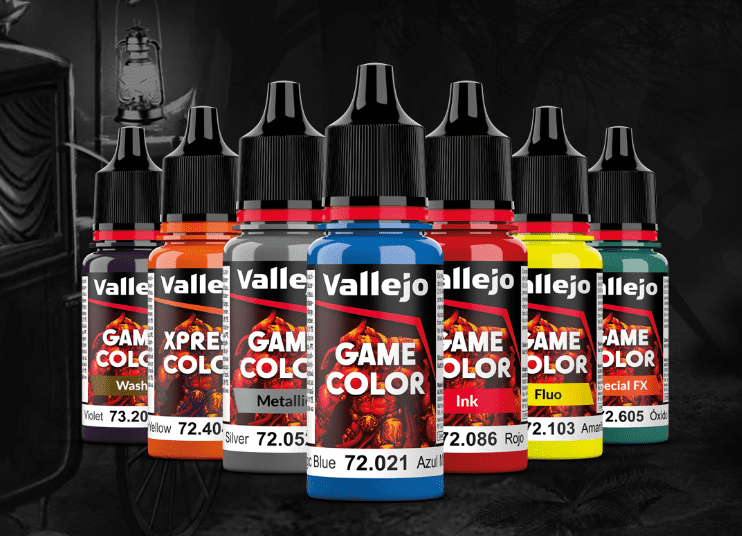
Known for its dropper bottles (which painters praise like a rare artifact), Vallejo’s range of model paints is a perfect blend of quality and affordability. Whether you’re painting historical models, fantasy armies, or sci-fi mechs, Vallejo’s got a color for you.
One of the best things about Vallejo paints is their airbrush compatibility. They flow through an airbrush like a dream, making them the top choice for painters who like to mix things up with techniques. However, Vallejo paints can sometimes be tricky to find in certain regions, particularly in the U.S.
Pros & Cons
- Pros:
- Great value for money, with a decent amount per bottle.
- Dropper bottles make for easy dispensing and storage.
- Perfect for both brush and airbrush techniques.
- Cons:
- Availability can be hit or miss, especially in the U.S.
Price Comparison of Model Paints for Miniatures
- Citadel GW Paint: 12ml pot for $4.55
- Citadel Contrast Paint: 18ml pot for $7.80
- Citadel Air (new, bigger pot) 24 ml pot for $7.80
- Vallejo Paint: 17ml dropper bottle for $3.99 ($4.99 for Xpress Paint)
- Pro Acryl: 22ml dropper bottle for $4.65 (Note: they raised the price 25 cents, but also give 5ml more per pot now).
- Turbodork (Speciality Metal Colorshift Paint) 20ml dropper bottle for $6.30
- Scale 75 Paint: 17ml dropper bottle for (about) $4.49
- Army Painter Paint: 18ml dropper bottle for $3.50
- P3 Paint (Privateer Press) 20ml pot for $4.50
- Reaper Paints 14.78ml for $3.69
What are the Most Expensive Acrylic Paints for Miniatures & Models?
The breakdown shows that GW has the most expensive paint per ML across the board. Plus, they don’t come in the dropper bottles used by all the other brands.
- Citadel GW: 38 Cents/ML
- Citadel Contrast: 43 Cents/ ML (most expensive)
- Citadel Air (new bigger pot): 33 Cents /ML
- Vallejo: 23 Cents/ML
- Pro Acryl: 21 Cents/ML (2nd least expensive)
- Turbodork: 31 Cents/ML
- Scale 75: 27 Cents/ML
- Army Painter: 18 Cents/ML (least expensive)
- P3 Paint (Privateer Press) 22 Cents/ML
- Reaper Paints 25 cents/ML
Best Paint for Miniatures Based on Use Cases
Choosing the right paint isn’t just about price—it’s about what works for you and your miniatures. Whether you’re a beginner or a veteran, the right paint can make all the difference. Let’s break down the best paints for different situations.
 Best Paint for Beginners: Army Painter & Citadel
Best Paint for Beginners: Army Painter & Citadel
When you’re just starting out on your painting journey, the last thing you want is to wrestle with fussy paints. This is where Army Painter and Citadel really shine. Both brands are easy to find, making them accessible no matter where you are.
Citadel comes with the bonus of being tailor-made for Warhammer models. Their Base and Layer paints are designed to give solid coverage without requiring a master’s touch, so you don’t have to worry about ruining your first batch of Space Marines. Plus, Games Workshop provides plenty of tutorials and guides to help you learn the ropes.
Army Painter is perfect for beginners who want more bang for their buck. Their paints are slightly thicker, which means you’ll need to learn how to thin them properly, but once you get the hang of it, they offer great value. If you’re painting entire armies and need to get them tabletop-ready fast, their color-matching system with primers is a life-saver.
Best Acrylic Paint for Airbrushing: Vallejo and Army Painter
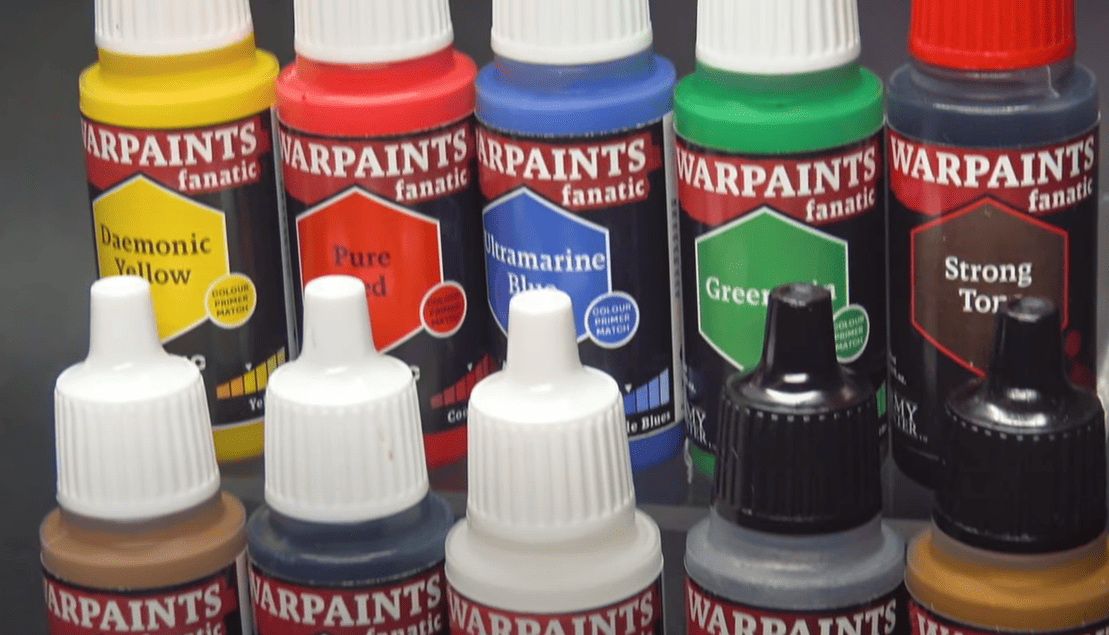
Vallejo Game Air is specifically formulated for airbrushing. It doesn’t need thinning straight out of the bottle, which makes it a fantastic option for both beginners and pros. It lays down smooth, even coats and dries to a nice matte finish, which is perfect for those who like to layer with precision.
Army Painter Warpaints Air also deserves a mention. While their range isn’t as vast as Vallejo’s, they offer great value and consistency. They flow through an airbrush beautifully, and with their affordable price point, you won’t feel guilty about testing new techniques on your miniatures.
Best Metallic Paints for Miniatures

Pro Acryl’s metallics are known for their superior coverage and smoothness. Unlike some metallic paints that require multiple layers to achieve a proper shine, Pro Acryl’s options offer great opacity. Whether you’re painting knights in shining armor or ancient war machines, these metallics provide a polished finish that’s second to none.
Vallejo’s metallics are also highly praised for their fine pigments. Their Model Air range is particularly great for achieving that perfect metallic sheen, and you can use them with both a brush and airbrush. If you’re after a rich, realistic finish, Vallejo metallics have got your back.
Best Paint for Warhammer Models
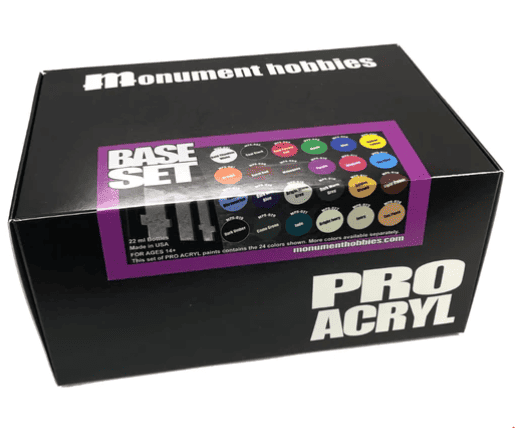
Pro Acryl, however, offers a more versatile and affordable option without compromising quality. Their color range is packed with rich, vibrant colors that suit Warhammer’s fantastical settings. Many Warhammer fans use a combination of both brands, picking Citadel for their favorite shades and Vallejo for larger projects or armies.
How to Transfer Citadel Paints to Dropper Bottles
Ah, Citadel paints—beloved by Warhammer fans and miniature painters alike, but let’s be honest, those little pots can be the bane of your hobby life. You carefully open a fresh pot of paint, only to have half of it dry out faster than you can say, “For the Emperor!” So what’s the solution? Transferring Citadel paints into dropper bottles.
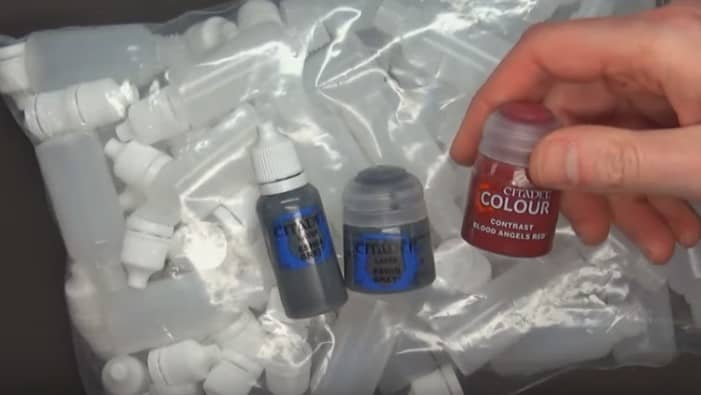
- Gather your materials: You’ll need empty dropper bottles (these are easy to find online or at hobby stores), a stirring stick or toothpick, some small funnels or pipettes, and, for good measure, a vortex mixer or old-fashioned elbow grease to shake things up.
- Open the Citadel pot: This is always a fun adventure—just don’t spill that precious paint! Using a stirring stick or toothpick, gently stir the paint to ensure it’s well mixed before transferring. If the paint’s on the thicker side, consider adding a few drops of water or acrylic medium to loosen it up.
- Transfer the paint: Use a pipette or small funnel to carefully pour the paint into the dropper bottle. Patience is key here—don’t rush it, or you’ll end up wearing more paint than your miniatures. A pipette can help you avoid any mess, and yes, mini-paint spillage is as frustrating as missing your last wound roll.
- Label your dropper bottle: Don’t forget this step, unless you want to guess if that mystery gray is Mechanicus Standard or Dawnstone! Use a fine marker or label to write the paint’s name and number on the bottle for easy reference.
That’s it! Transferring Citadel paints into dropper bottles is a simple process that’ll save you time, money, and frustration down the line. No more gunky lids or dried-up pots—just smooth painting sessions every time.
Acrylic Paint Accessories for Miniatures
Now that your paints are safely in their new dropper bottle homes, let’s talk about the extra tools that make the painting process even more enjoyable. Every miniature painter knows the right accessories can turn a decent session into a masterpiece-making marathon.
Vortex Mixers: A Must-Have for Preventing Clumping
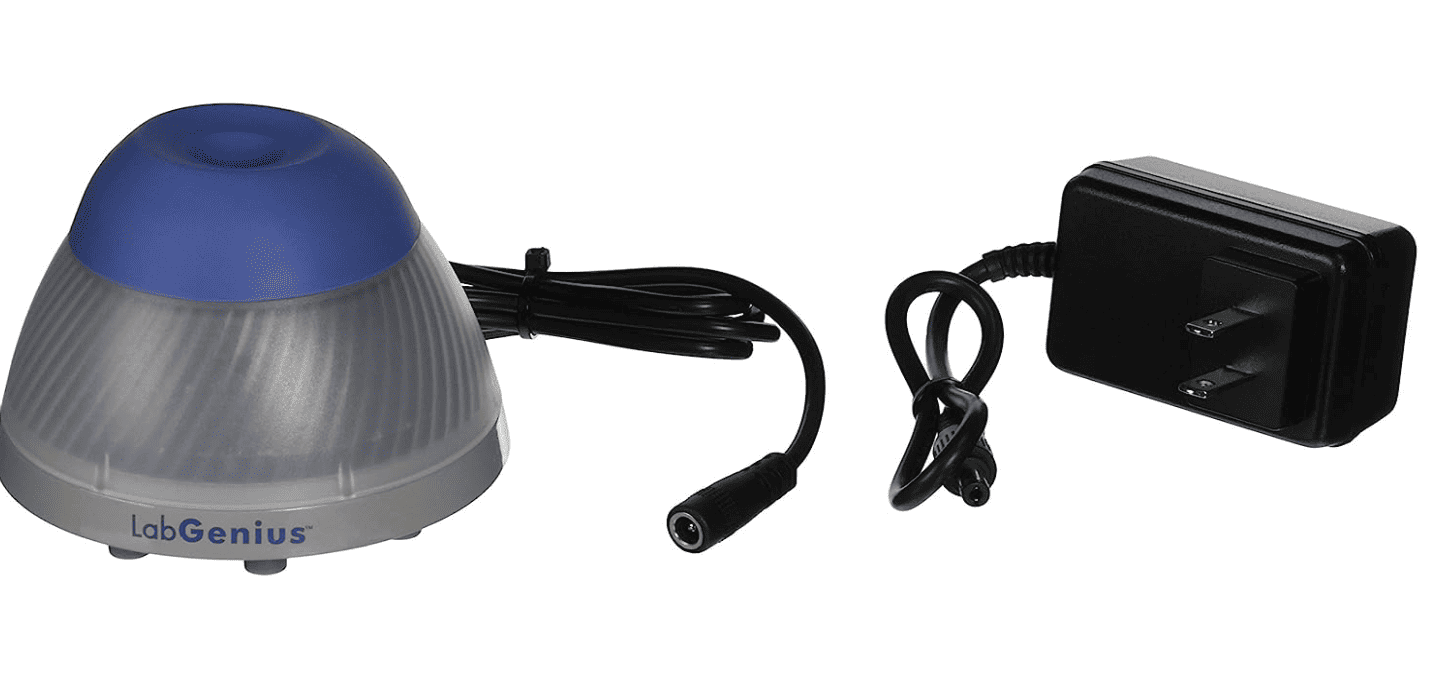
This little gadget is a lifesaver for your paints. Place your bottle on the top, press down, and the mixer will swirl the paint into a perfectly blended state, restoring it to its full, creamy glory. No more chunks, no more streaks—just smooth, even coverage for your miniatures.
And hey, it’s oddly satisfying to watch your paint bottles whirl around like they’re in a high-speed dance-off.
Sure, you can get by with a good old-fashioned hand shake, but if you’ve got a collection of paints that could rival the Black Library, a vortex mixer is a great investment to keep your colors in perfect working order. Your wrist will thank you.
Paint Thinners and Flow Improvers
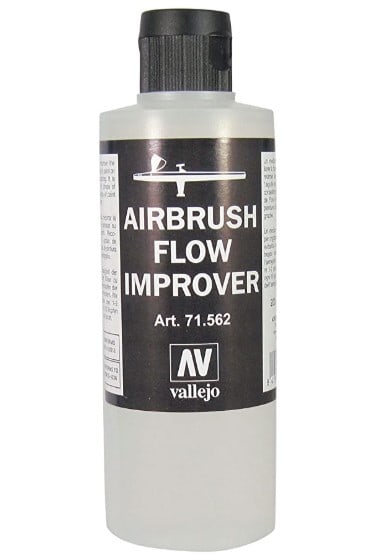
Paint thinners are exactly what they sound like: they dilute the paint while maintaining its opacity. This makes it easier to apply thin, smooth coats, whether by brush or airbrush. Without it, your airbrush could get gunked up faster than a Khorne Berserker charging into battle. And when you’re painting miniatures, thin layers are key to achieving crisp, detailed results.
Flow improvers are another gem. These reduce the surface tension of your acrylic paints, allowing them to spread more evenly and adhere better to your model. If your paint feels too thick or isn’t flowing nicely off the brush, a drop or two of flow improver will solve the problem. It’s like giving your paint a boost of caffeine—it just performs better.
Both of these additives are must-haves for airbrushing, but even brush painters can benefit from them. You’ll find your paints are smoother, more controllable, and far less likely to dry on the brush before you’ve even finished your first layer.
Best Washes and One-Coat Paints for Miniatures
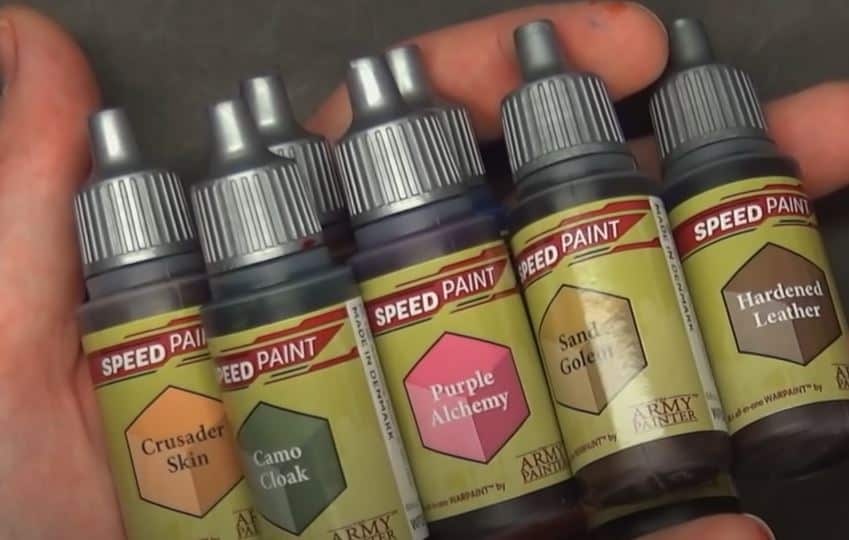
These two heroes of the miniature painting world promise to get your models tabletop-ready in record time, while still looking good enough to make your opponents second-guess their armies. But which one should you choose for your next paint job? Let’s break it down.
Citadel Contrast Paint vs. Army Painter Speedpaints
Both of these paints are designed to be applied in a single coat, offering shading, highlights, and base color all in one go. This means you can go from plastic gray to painted in fewer steps than it takes an Imperial Guard squad to be wiped out by a Tyranid horde.
Citadel Contrast Paint is the original one-coat champion. It’s been on the scene for a while, and Games Workshop fans swear by it for fast, effective results. Contrast paints work best when applied over a light-colored undercoat—ideally something like Wraithbone or Grey Seer.
Once applied, the paint flows into the recesses, creating natural shading while leaving the raised areas lighter. It’s like magic, but with more pigment.
The downside? Price. Citadel Contrast Paints can be a bit steep, especially if you’re covering an entire army. But if you’re after precision and control, Contrast paints offer a wide range of colors and the potential for more detailed finishes than you might expect from a “quick” paint.
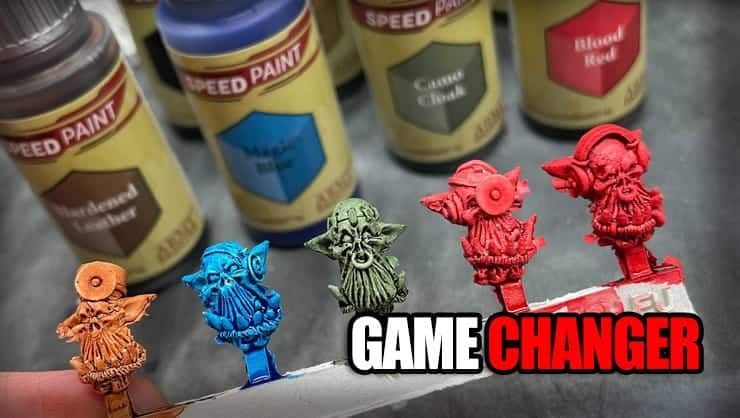
What sets Speedpaints apart is their price and ease of use. For those looking to mass-produce painted miniatures (we’re looking at you, Warhammer army builders), Speedpaints are great for quickly getting your models battle-ready.
Plus, they come in larger bottles, making them even more economical for big projects.
Final Thoughts: Choosing the Best Acrylic Paint for Your Miniatures & Warhammer
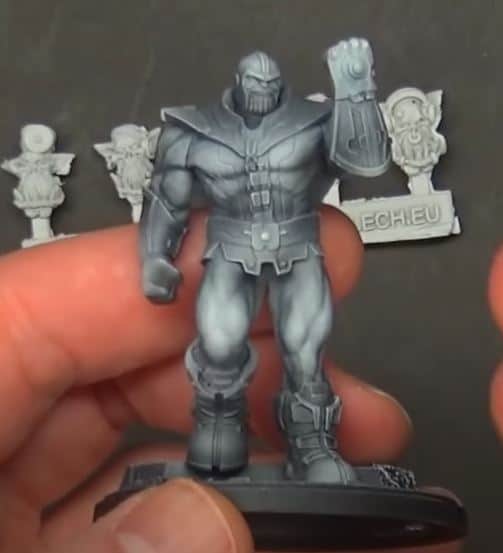
- Budget-conscious modelers should consider Army Painter for its affordability and large bottle sizes, especially if you’re painting entire armies or gaming groups. Speedpaints offer the fastest route to a painted army, while their regular Warpaints line provides good value for general use.
- If you’re after high-end finishes, especially for display pieces or character models, you can’t go wrong with Citadel. Their paints, washes, and Contrast options provide top-notch pigmentation and are readily available, though you’ll pay a premium for that quality.
- Vallejo is the all-rounder for modelers who want versatility. Great for both brush and airbrush work, Vallejo offers a broad color range and fantastic value, making it a solid choice for both casual painters and pros.
- For those who demand superior blending and smooth flow, Pro Acryl is a top choice. While its color range is limited, its coverage and quality make it stand out in the world of model paints.
- If realism is your goal, look no further than Scale 75. Their matte finish and layering potential make them perfect for anyone wanting to push their miniatures to the next level in terms of texture and depth.
And if you’re someone who just wants to get your models painted quickly—without sacrificing too much in terms of appearance—Contrast Paints and Speedpaints are your new best friends. They may not give you Golden Demon-winning results, but they’ll get you an impressive army in a fraction of the time.
Ultimately, the best acrylic paint for miniatures is the one that matches your needs. Whether you’re painting armies of Space Marines or a single Elven Ranger, there’s a paint brand and technique for you. And remember, it’s not about having the most expensive paints—it’s about how you use them. Happy painting!
All the Latest Warhammer Rules & Model Rumors
What do you think about all the types of model and miniature acrylic paint out there for Warhammer and tabletop gaming? Which is your favorite?
